Arctic
The Arctic is a region located at the northernmost part of the Earth. It is known for its cold climate, unique wildlife, and vast stretches of ice and snow.
Key Facts about the Arctic:
- The Arctic is home to polar bears, Arctic foxes, reindeer, and various species of seals and whales.
- The Arctic Circle is an imaginary line that marks the southern boundary of the Arctic region. It is located at approximately 66.5 degrees north latitude.
- The Arctic is characterized by long, cold winters and relatively short, cool summers. The average temperature in the Arctic is below freezing for much of the year.
- The Arctic is experiencing rapid environmental changes due to global warming, leading to the melting of sea ice and other ecological challenges.
Geography of the Arctic:
The Arctic encompasses the Arctic Ocean and parts of Canada, Russia, Greenland, the United States (Alaska), Norway, Sweden, Finland, and Iceland.
Arctic Indigenous Peoples:
The Arctic is home to several indigenous groups, including the Inuit, Yupik, and Saami people. They have unique cultures and traditions adapted to the extreme Arctic environment.
Study Guide Questions:
- What is the Arctic Circle, and why is it significant?
- Describe the climate of the Arctic and how it affects the region's wildlife.
- How are indigenous peoples in the Arctic adapting to environmental changes?
- Explain the impact of global warming on the Arctic ecosystem.
- Identify and describe three animal species that are native to the Arctic region.
◂Science Worksheets and Study Guides Second Grade. The sun and earth
Study Guide The sun and earth
The sun and earth  Activity Lesson
Activity Lesson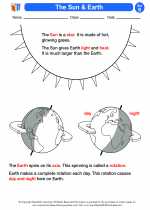 The Sun & Earth
The Sun & Earth  Worksheet/Answer key
Worksheet/Answer key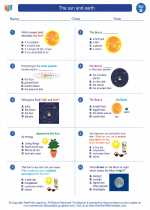 The sun and earth
The sun and earth  Worksheet/Answer key
Worksheet/Answer key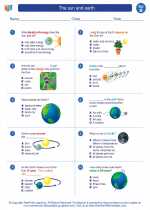 The sun and earth
The sun and earth  Worksheet/Answer key
Worksheet/Answer key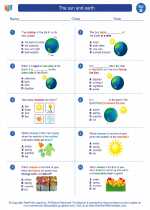 The sun and earth
The sun and earth  Worksheet/Answer key
Worksheet/Answer key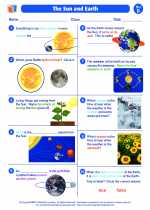 The Sun and Earth
The Sun and Earth  Vocabulary/Answer key
Vocabulary/Answer key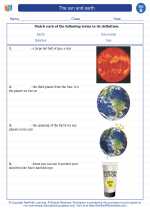 The sun and earth
The sun and earth 

 Activity Lesson
Activity Lesson
 Worksheet/Answer key
Worksheet/Answer key
 Worksheet/Answer key
Worksheet/Answer key
 Worksheet/Answer key
Worksheet/Answer key
 Worksheet/Answer key
Worksheet/Answer key
 Vocabulary/Answer key
Vocabulary/Answer key

The resources above cover the following skills:
Concepts of Earth Science: A student should understand and be able to apply the concepts, processes, theories, models, evidence, and systems of earth and space sciences. A student who meets the content standard should:
Develop an understanding of the cyclical changes controlled by energy from the sun and by Earth's position and motion in our solar system.